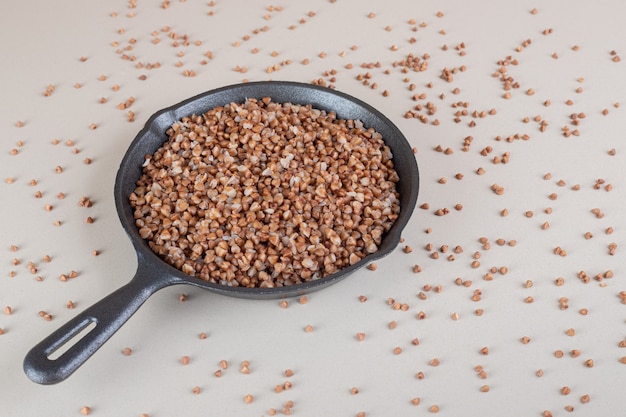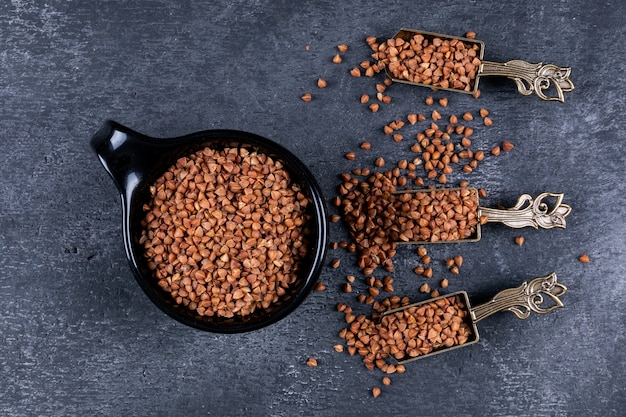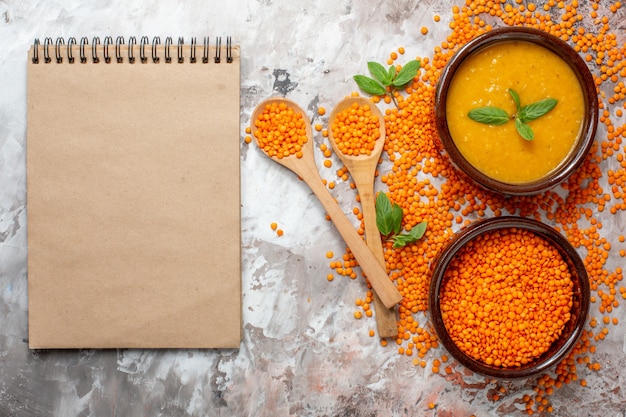Lentils, those unassuming little legumes, hold a special place in my heart. They're incredibly versatile, packed with protein and fibre, and just plain delicious. But let's be honest, mastering the art of lentil cooking can feel like a culinary puzzle. You don't want them mushy and overcooked, but you also don't want them hard and unyielding. Fear not, my fellow lentil lovers! This guide is your key to unlocking the secrets of perfect lentils, every single time. I'll share my personal experiences, favourite tips, and a few tricks I've learned over the years. Let's dive in!
(Part 1) Unveiling the Lentil Family: A Guide to Varieties

First things first, let's get acquainted with the different types of lentils. Imagine them as a quirky family, each member with a unique personality and culinary purpose. Understanding their characteristics will help you choose the right lentil for your recipe.
1. The Everyday Hero: brown lentils
These are your classic, go-to lentils. They have a lovely earthy flavour and hold their shape remarkably well during cooking, making them perfect for hearty soups, stews, salads, and even side dishes. I love them for their versatility and the fact that they stay firm and satisfying, unlike some other lentil varieties. Think of them as the dependable hero of the lentil world, always ready for action.
2. The Earthy Ninja: green lentils
Slightly smaller than brown lentils, green lentils are known for their firm texture and slightly peppery flavour. They're a fantastic choice for French lentil salad (a personal favourite!), and they add a delightful bite to curries and vegetable dishes. Imagine them as the sneaky ninja lentils, quick and agile, adding a punch of flavour to every dish.
3. The Creamy Wizard: red lentils
These little gems are the smallest of the bunch, and they're split, which means they cook quickly and tend to break down, creating a creamy, velvety consistency. Red lentils are the culinary wizards of the lentil world, transforming into a luscious sauce that's perfect for Indian dal, soups, and even lentil loafs.
4. The Elegant Superstar: black lentils
Black lentils are the stars of the show! Their beautiful deep colour and firm texture make them a standout choice for salads, side dishes, and even lentil burgers. They add a touch of elegance and sophistication to any dish. Think of them as the stylish lentil, making a statement wherever they go.
5. The Regal French Lentil: Le Puy
Also known as "le puy lentils," these little gems are a bit of a luxury item! They have a beautiful green colour, a slightly nutty flavour, and hold their shape beautifully, making them perfect for salads, side dishes, and even soups. They're the royalty of the lentil world, elegant and refined, adding a touch of sophistication to any meal.
(Part 2) Unlocking the Secrets of Soaking: Enhancing Your Lentil Experience

Now, let's talk about a secret weapon that can significantly elevate your lentil game: soaking. Think of it as giving your lentils a little spa treatment before they get cooking. Soaking not only improves their texture and flavour, but it can also shorten their cooking time, making them even more convenient to work with.
1. Why Soaking Matters
Soaking lentils offers a multitude of benefits. It reduces the cooking time, making them quicker and easier to prepare. It also softens their texture, making them more digestible and enhancing their flavour. Some people even say it helps to reduce any potential gas-producing compounds, making them even more enjoyable to consume. I've found that a good soak makes them taste even more earthy and delicious, truly unleashing their full potential.
2. Soaking Made Simple
Soaking lentils is a simple process. First, rinse them thoroughly in a colander under cold running water to remove any debris. Then, transfer them to a bowl and cover them with cold water. The general rule is to soak them for at least 30 minutes. If you're in a hurry, a quick 15-minute soak can still make a difference, but for the best results, aim for a 2-3 hour soak if you have the time.
3. Getting Creative with Soaking: Variations and Tips
You can add a touch of culinary magic to your soaking process by getting creative with the water. A pinch of salt can enhance the flavour, while a squeeze of lemon juice can help to soften them further. I've even experimented with soaking them in herbal tea, which adds a lovely, subtle flavour to the lentils. Don't be afraid to experiment and see what works best for you!
(Part 3) Cooking Lentils: A Step-by-Step Guide for Delicious Results

Now, let's get cooking! Here's a simple, step-by-step guide that works for most lentil varieties. Just adjust the cooking time based on the type of lentil you're using. Don't worry, it's a breeze!
1. The Magic Ratio: Finding the Perfect Balance
The key to cooking perfect lentils is finding the right ratio of lentils to liquid. I generally use a 1:2 ratio, so for every 1 cup of lentils, I use 2 cups of water or broth. If you're using broth, choose a flavour that complements your dish. chicken broth works well for a hearty lentil soup, while vegetable broth is perfect for a vegetarian stew. It's all about creating a flavour symphony!
2. The Right Pot for the Job: Choosing Your Cooking Vessel
A heavy-bottomed pot is ideal for cooking lentils, as it ensures even heat distribution and prevents sticking. This helps to ensure that your lentils cook evenly and don't end up stuck to the bottom of the pot. If you don't have one, a regular saucepan will do. Just make sure it's large enough to allow the lentils to cook comfortably without overcrowding, giving them room to move and cook evenly.
3. Cooking Time: A Cheat Sheet for Lentil Perfection
Here's a handy table to help you with the cooking times for different lentil varieties, both with and without soaking. Remember, these are just estimates, so always check for tenderness. You can always add a bit more water if needed, but trust me, overcooked lentils are a sad sight!
| Lentil Type | Soaked Cooking Time (Minutes) | Un-Soaked Cooking Time (Minutes) |
|---|---|---|
| Brown Lentils | 20-30 | 40-60 |
| Green Lentils | 15-25 | 30-45 |
| Red Lentils | 10-15 | 20-30 |
| Black Lentils | 25-35 | 45-60 |
| french lentils | 25-35 | 45-60 |
4. Adding Flavor: A Symphony of Taste
Lentils are like blank canvases, waiting for your culinary artistry to transform them into masterpieces. Experiment with spices, herbs, garlic, onions, carrots, celery, and even tomatoes. A splash of vinegar, lemon juice, or soy sauce can add extra zest and depth of flavour. Just remember to add these flavour enhancers towards the end of cooking so they don't overpower the lentils. It's all about creating a harmonious balance of flavours!
(Part 4) Signs of Lentil Perfection: Knowing When They're Ready
How do you know when your lentils are cooked to perfection? Look for these telltale signs:
- They should be tender but still hold their shape, not mushy and falling apart.
- They should have a soft, slightly creamy texture, indicating that they're fully cooked through.
- They should be cooked through, with no hard centres, ensuring that they're tender and ready to eat.
- They should have a pleasant aroma, not a raw or overly mushy one, signifying that they've reached their peak of flavour.
Remember, overcooked lentils can become mushy and lose their flavour. Don't be afraid to check them every few minutes towards the end of cooking. A little patience is key to achieving lentil perfection!
(Part 5) The Treasured Broth: Don't Throw it Away!
The broth that your lentils cook in is a culinary goldmine! It's packed with flavour and can be used in a variety of dishes, adding a delightful depth of taste. Don't waste it! Consider it a gift from the lentil gods!
1. Strain and Save: Preserving the Lentil Broth
Once your lentils are cooked, carefully strain them, reserving the broth. You can store it in the refrigerator for up to 3 days or freeze it for longer storage. Just remember to label it so you know what it is! This broth will become your secret weapon for creating flavourful and delicious dishes.
2. Broth for Every Occasion: Using Your Lentil Elixir
Here are a few ideas to put your lentil broth to good use:
- Add it to your favourite soup recipe for extra depth of flavour, making it even more luscious and satisfying.
- Use it as a base for a creamy lentil dip, adding a unique and delicious twist to your snacking routine.
- Thicken it with flour or cornstarch and use it as a sauce for vegetables or rice, creating a flavorful and nutritious accompaniment.
- Deglaze a pan with it after cooking meat or vegetables, adding a touch of lentil magic to your main courses.
(Part 6) Lentil Storage: Keeping Your Culinary Treasures Fresh
Cooked lentils can be stored in the refrigerator for up to 3 days. Just make sure to cool them completely before storing them in an airtight container. If you want to store them longer, you can freeze them for up to 3 months, ensuring that you have a readily available source of lentil goodness at your fingertips.
1. Freezing Lentils: A Guide to Long-Term Storage
To freeze cooked lentils, spread them out on a baking sheet lined with parchment paper and freeze them for about an hour, or until solid. Then transfer them to a freezer-safe bag or container. This helps to prevent them from sticking together when you freeze them, ensuring that they stay individually separated and ready to use.
2. Defrosting Lentils: Bringing Back Your Culinary Treasures
To defrost frozen lentils, transfer them from the freezer to the refrigerator the night before you plan to use them. You can also defrost them in the microwave, but be careful not to overcook them. Just a few minutes on low power should do the trick. Thawed lentils can be used in any recipe that calls for cooked lentils, ready to add their deliciousness to your culinary creations.
(Part 7) Lentil Creativity: A World of Culinary Possibilities
Lentils are incredibly versatile and can be used in countless dishes, from hearty soups and stews to refreshing salads and flavorful curries. Let's explore some creative ideas to inspire your culinary adventures.
1. Soups and Stews: Lentil comfort food
Lentils are a staple in hearty soups and stews, adding protein, fibre, and a satisfying texture. You can use them in classic lentil soup recipes, or add them to vegetable or meat stews for extra heartiness and a boost of nutrition. They're the perfect way to warm up on a chilly day.
2. Salads: A Lentil Twist on a Classic
Lentils add a hearty texture and protein to salads, making them more substantial and satisfying. Try them in a lentil and quinoa salad, or combine them with roasted vegetables and a vinaigrette dressing. They're a perfect way to add a touch of earthiness to your salads.
3. Curries: Lentils in Indian Cuisine
Lentils are a key ingredient in many Indian curries, especially dal. They add a creamy texture and earthy flavour to these dishes. Experiment with different spices and herbs to create your own signature lentil curry.
4. Veggie Burgers: Lentil Power in a Burger
Lentils are perfect for making veggie burgers, adding protein and moisture, and a delicious, earthy flavour. Blend them with other ingredients like oats, vegetables, and spices to create your own signature veggie burger recipe. They're a healthy and delicious alternative to traditional beef burgers.
5. Dips and Spreads: Lentil Delights
Blend cooked lentils with tahini, lemon juice, and garlic to make a delicious lentil dip, a healthier and more flavorful alternative to hummus. You can also use them as a base for other spreads, adding a unique touch to your snacking or entertaining. It's all about unleashing the lentil's versatility!
(Part 8) FAQs - Lentil Queries Solved!
Let's address some of the most common lentil questions. You've got questions, I've got answers!
1. Do lentils need to be soaked before cooking?
Soaking lentils is not mandatory, but it can make them cook more quickly and evenly. If you're short on time, you can skip the soaking step, but expect a slightly longer cooking time. I find that soaking them adds a touch of extra softness and improves the flavour, making them even more delicious and satisfying.
2. Can I use lentils in place of meat?
Absolutely! Lentils are a great source of protein and can be used as a meat substitute in many dishes. They're perfect for vegetarian or vegan diets, providing a hearty and delicious alternative to meat. They can add a delightful protein boost to soups, stews, veggie burgers, and more.
3. What are the best spices to use with lentils?
The best spices for lentils depend on the dish you're making. For a Middle Eastern flavour, try cumin, coriander, and turmeric. For a Mediterranean twist, add oregano, thyme, and rosemary. And for a spicy kick, use chilli powder, cayenne pepper, or paprika. Experiment and discover your own favourite lentil spice combinations!
4. How do I prevent lentils from getting mushy?
To prevent lentils from getting mushy, don't overcook them. Check them frequently towards the end of cooking, and remove them from the heat as soon as they're tender. Also, avoid stirring them too much during cooking, as this can break them down and make them mushy. Gentle cooking is key to achieving the perfect lentil texture.
5. What are some creative ways to use leftover lentils?
Leftover lentils are a culinary treasure! You can add them to salads, soups, stews, or even use them as a base for veggie burgers, dips, or spreads. Get creative and experiment with different flavour combinations! Think of it as a culinary adventure, using leftover lentils to create new and exciting dishes.
Everyone is watching

How to Cook Frozen Lobster Tails Perfectly: A Step-by-Step Guide
RecipesLobster. Just the word conjures up images of lavish meals, special occasions, and a taste of luxury. But let's...

Pigs in a Blanket Cooking Time: How Long to Bake for Perfect Results
RecipesAh, pigs in a blanket. Just the name conjures up images of those delightful little parcels of crispy pastry en...

Pork Fillet Cooking Time: How Long to Cook It Perfectly
RecipesPork fillet, or tenderloin as it's sometimes called, is a real favourite in our house. It's so versatile, and...

The Ultimate Guide to Cooking Delicious Frankfurters
RecipesLet's face it, we all love a good frankfurter. It's a classic, simple, and always satisfying. But let's be rea...

Wolf Meat Recipes: A Guide to Cooking Wild Game
RecipesLet's be honest, you don't see wolf meat at your local butcher shop every day. It's a bit of a wild card, but ...
